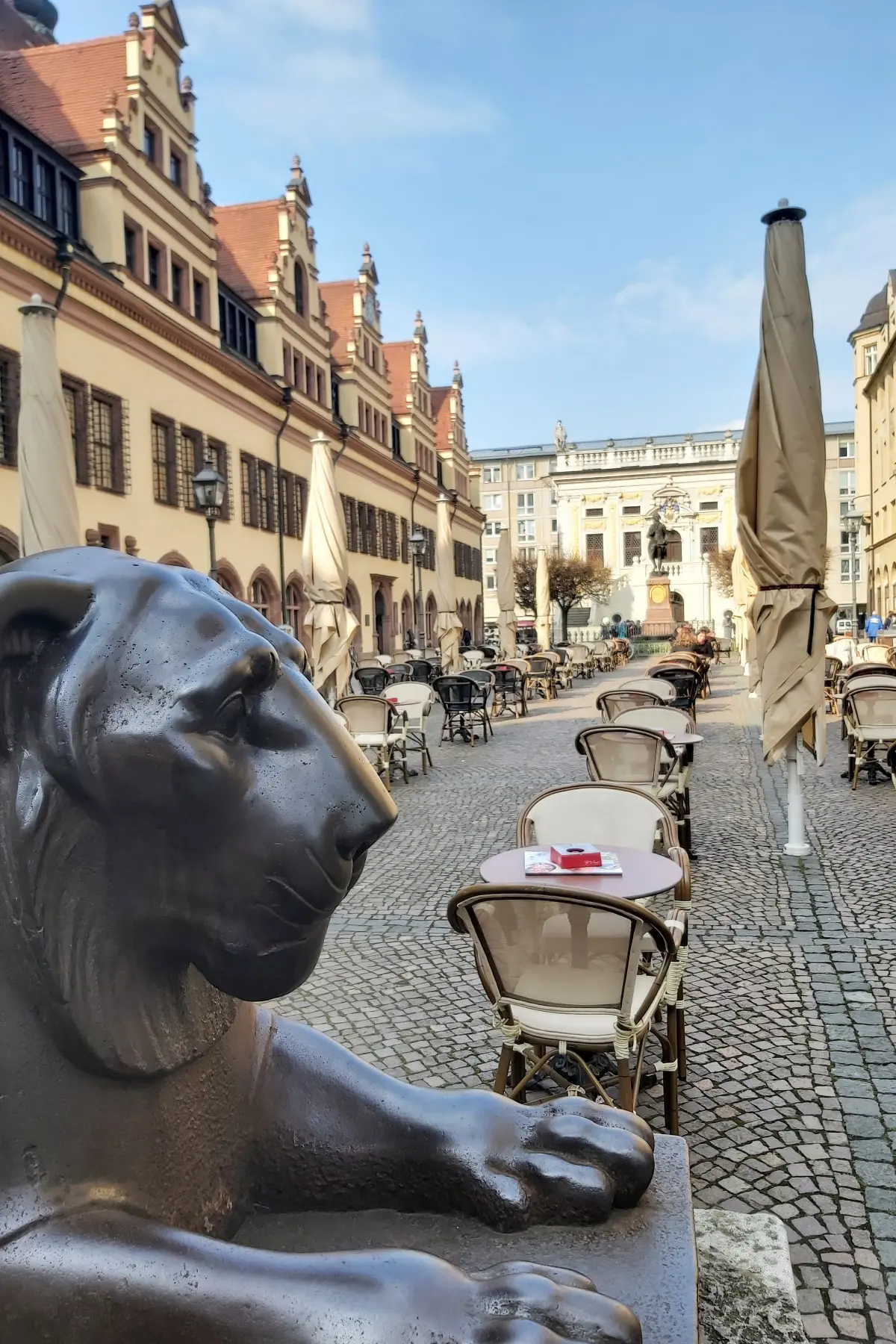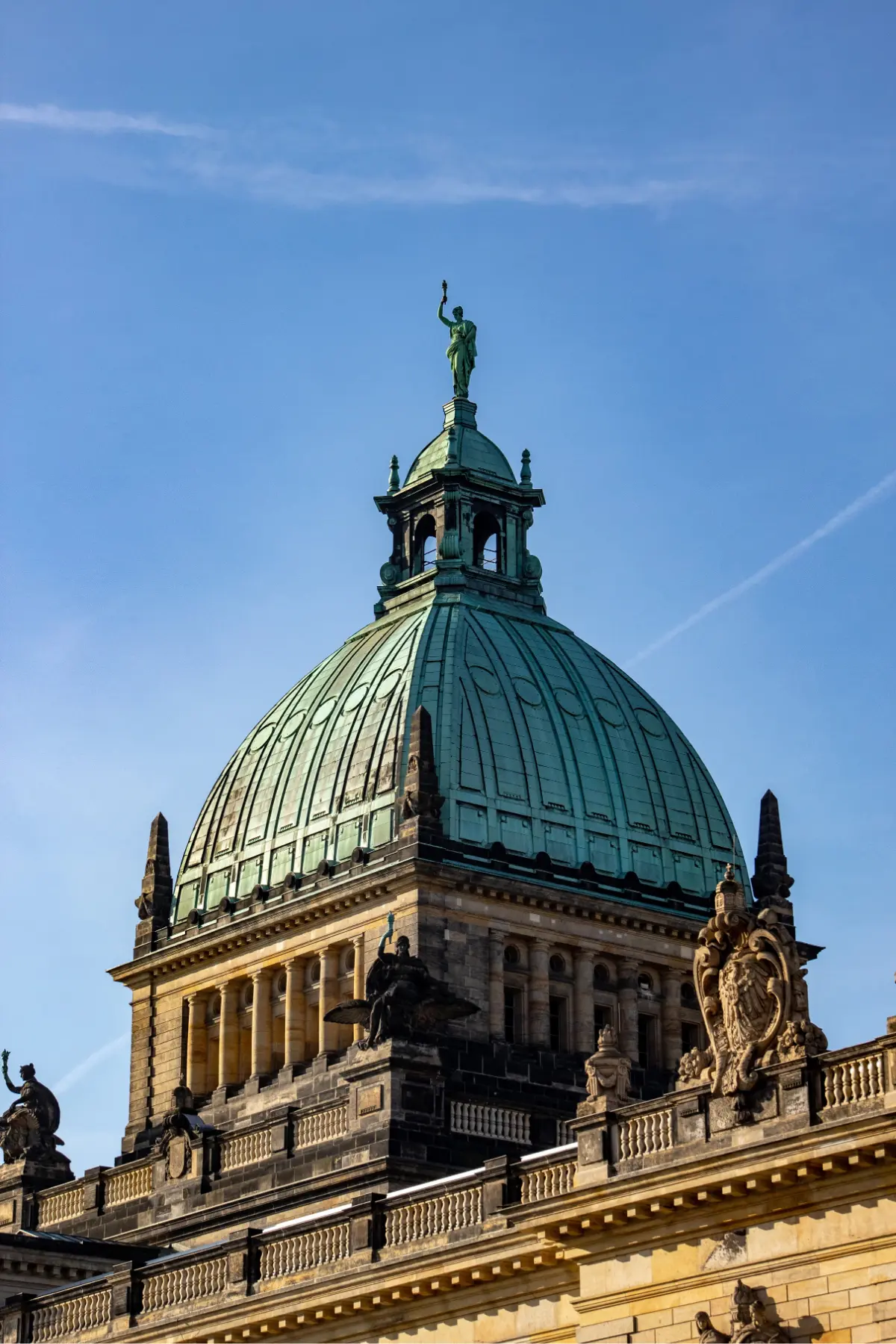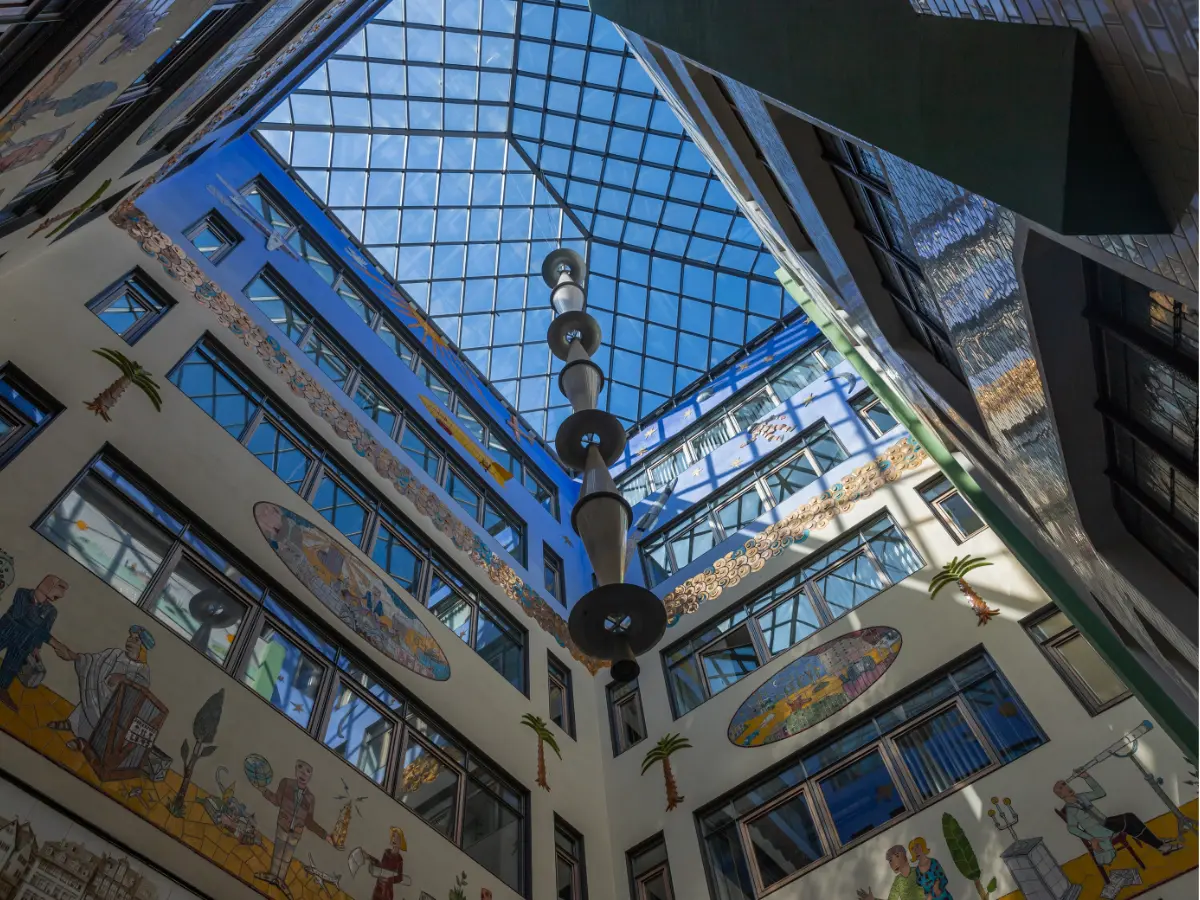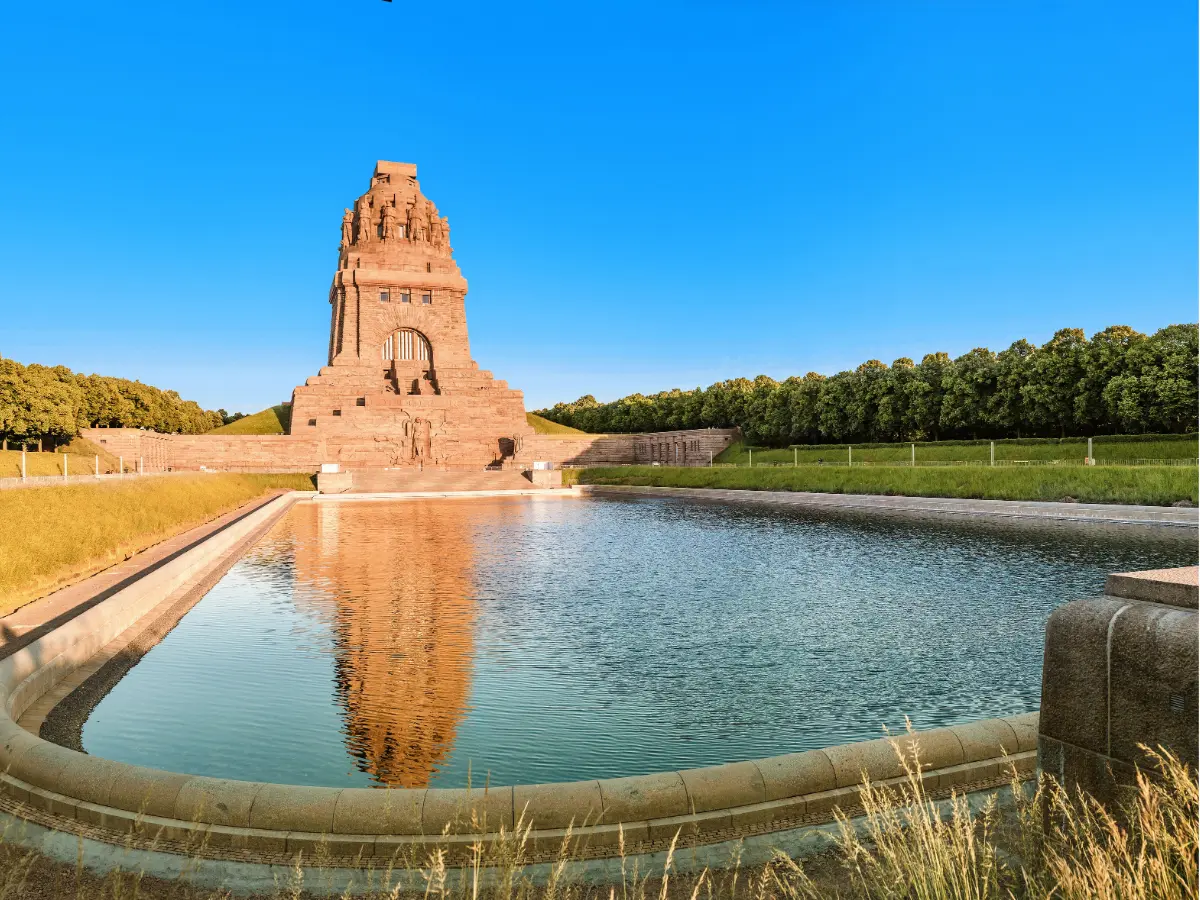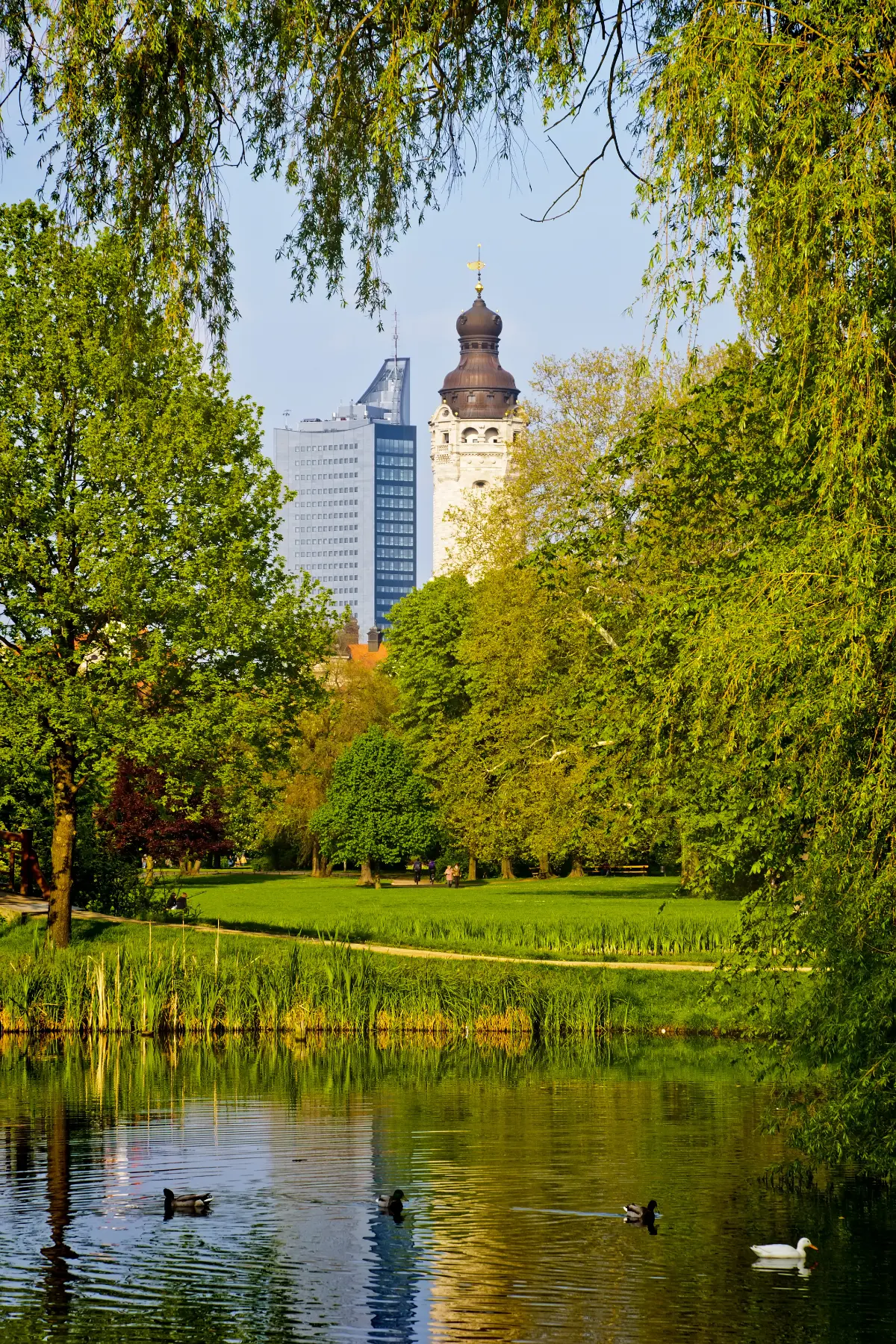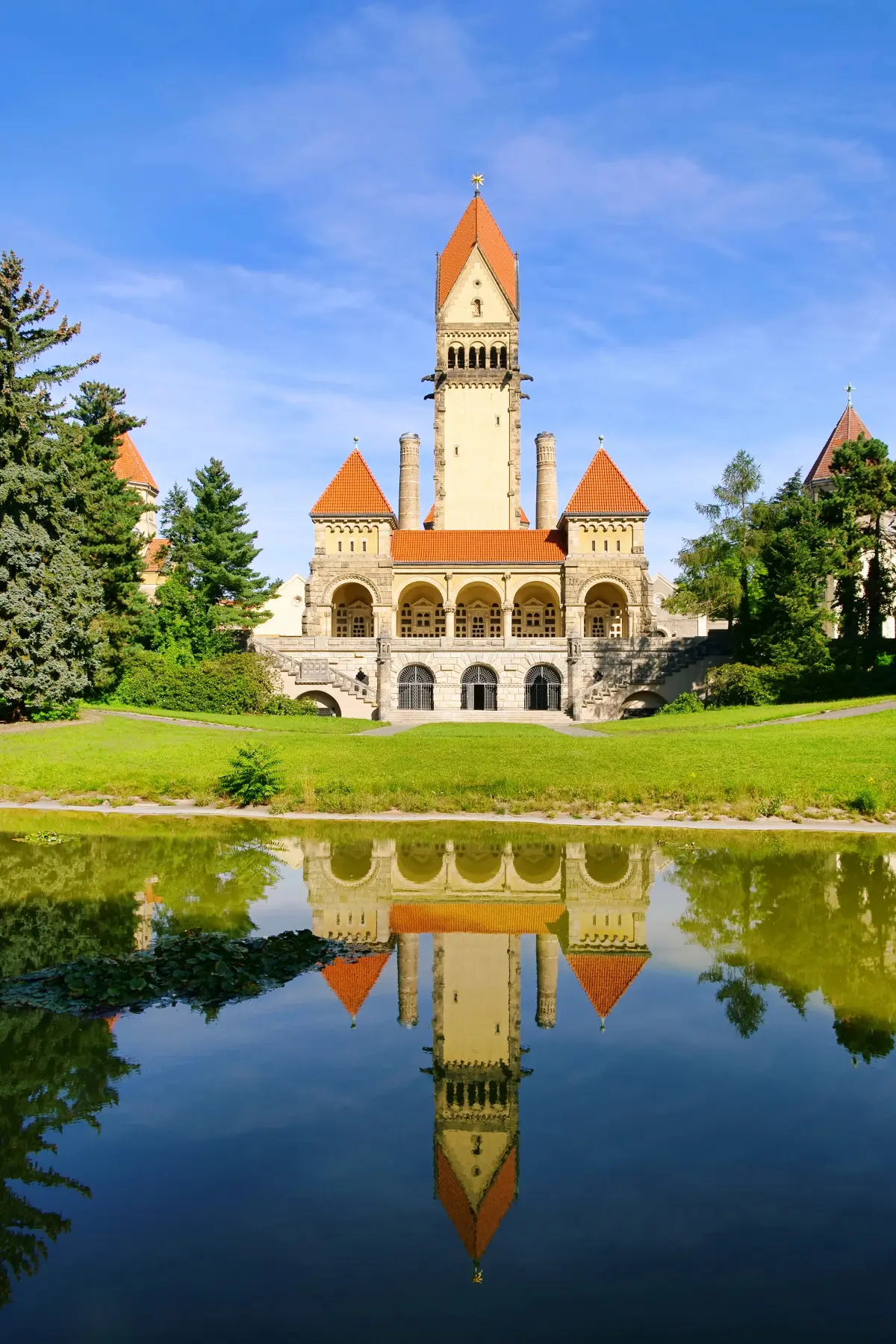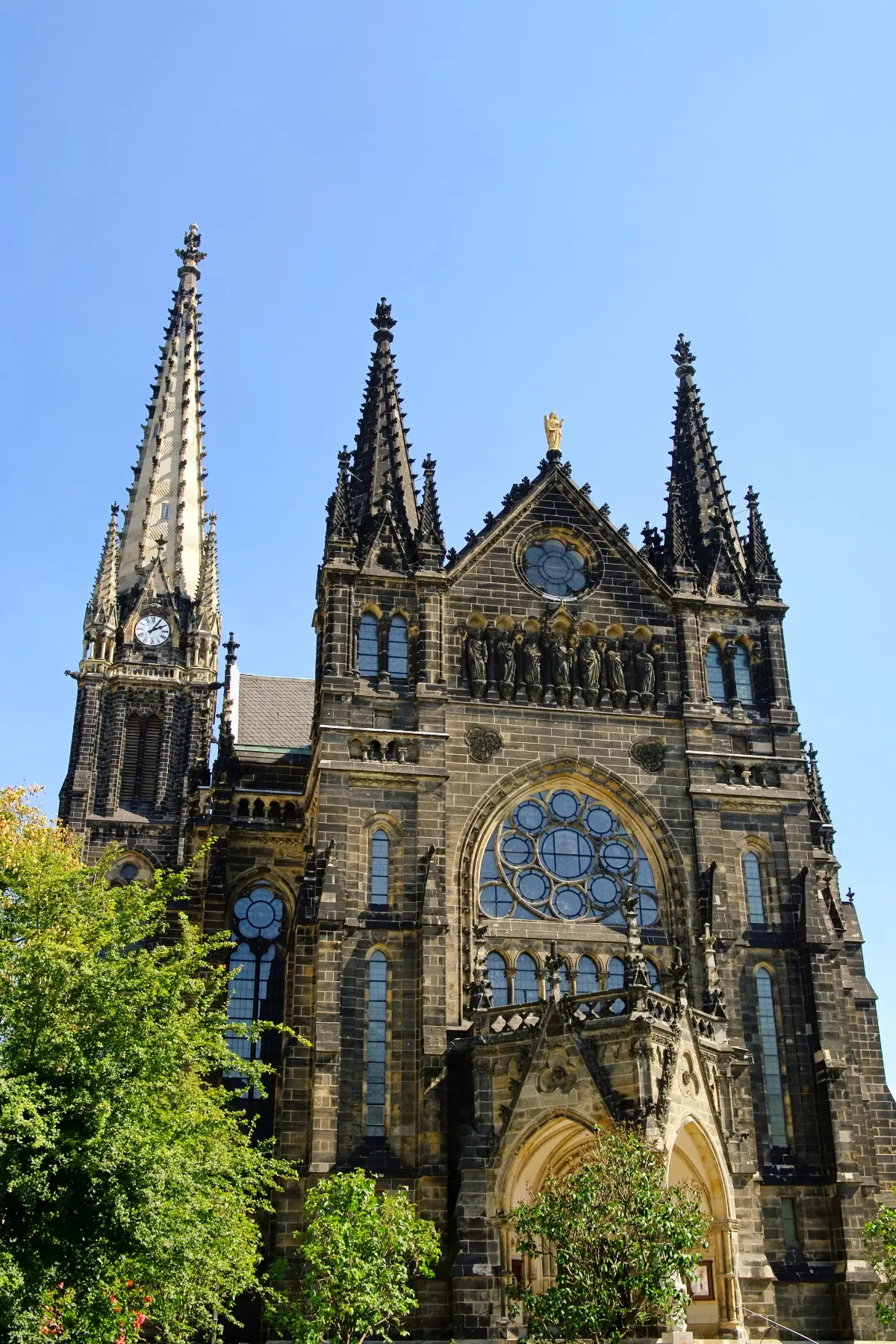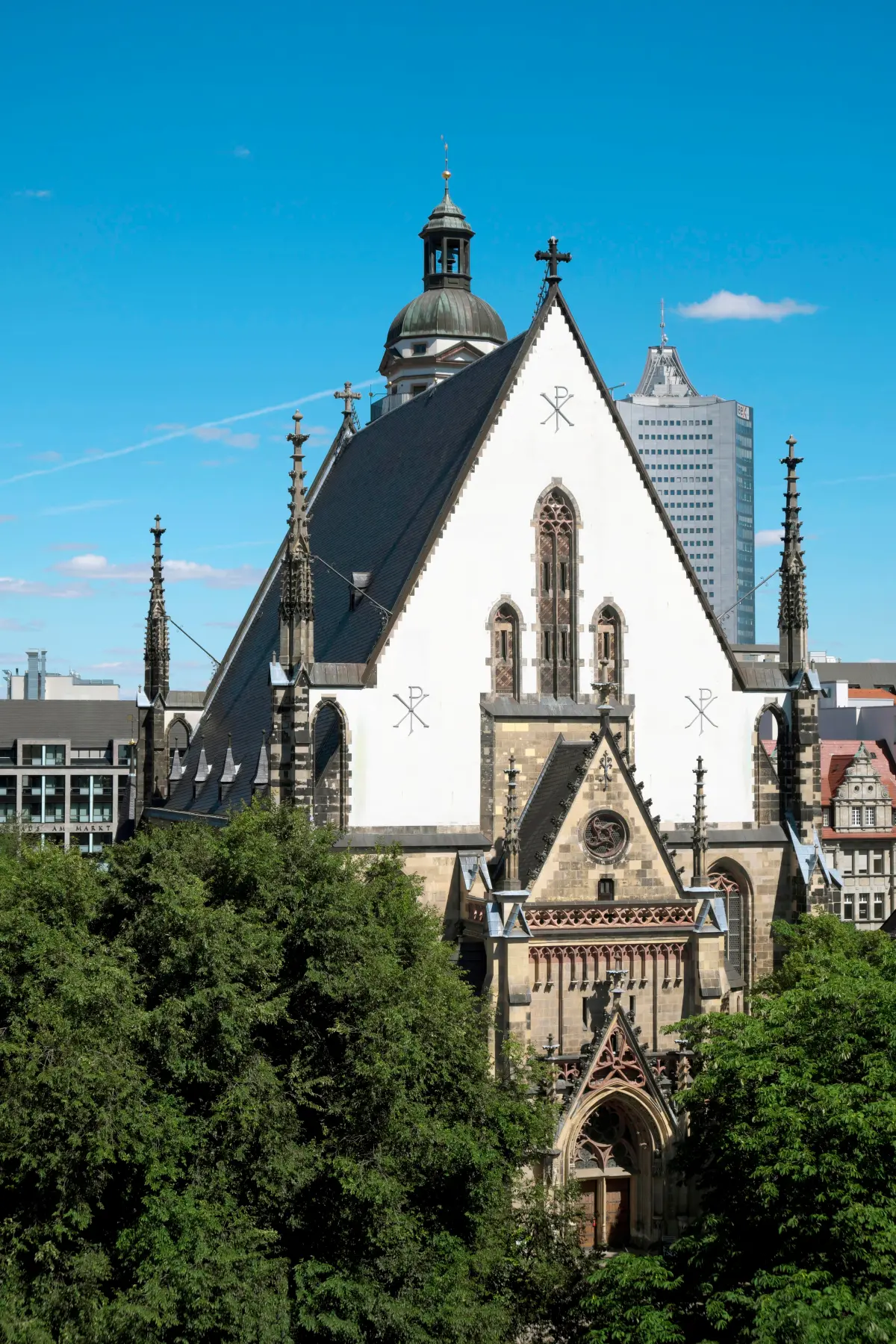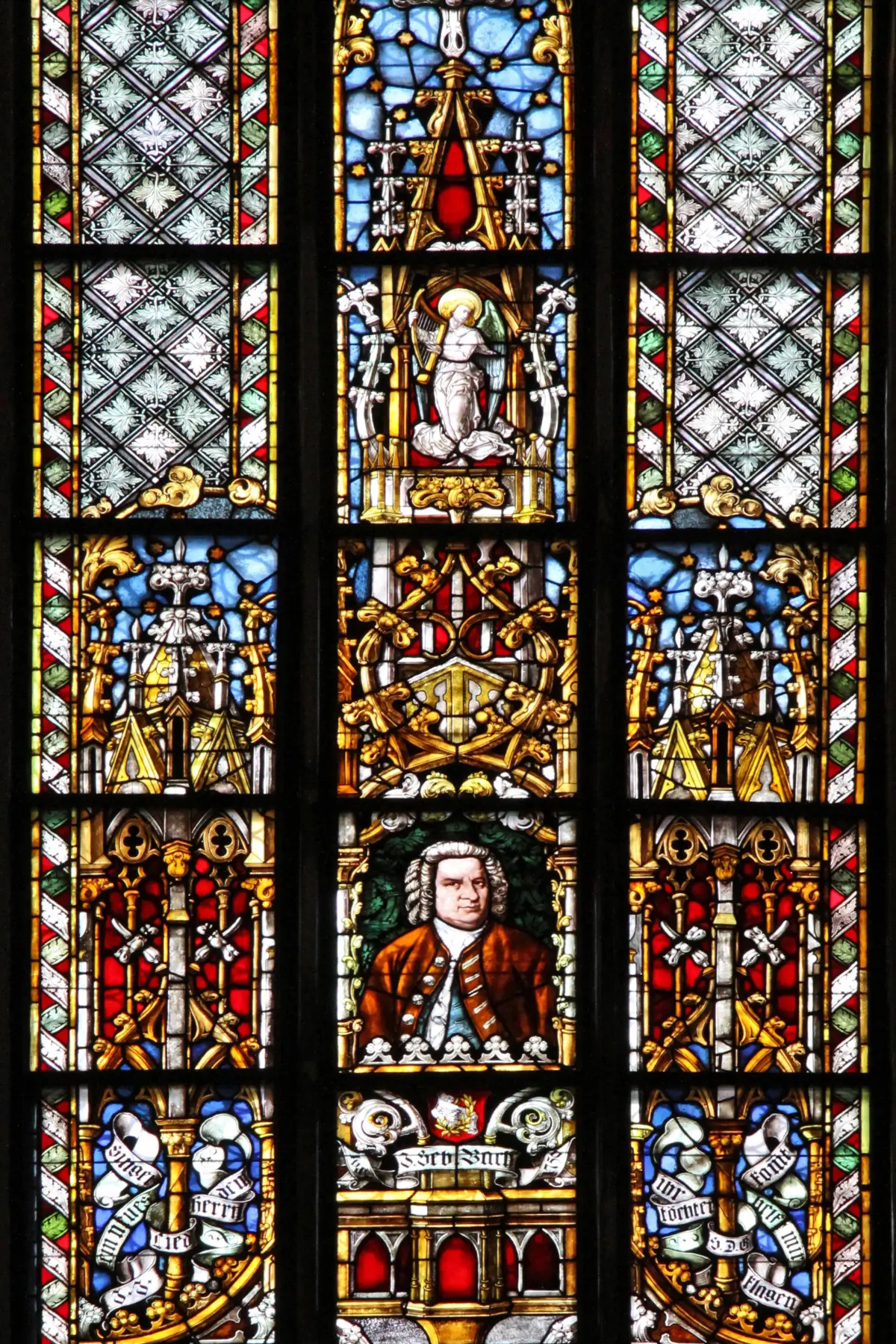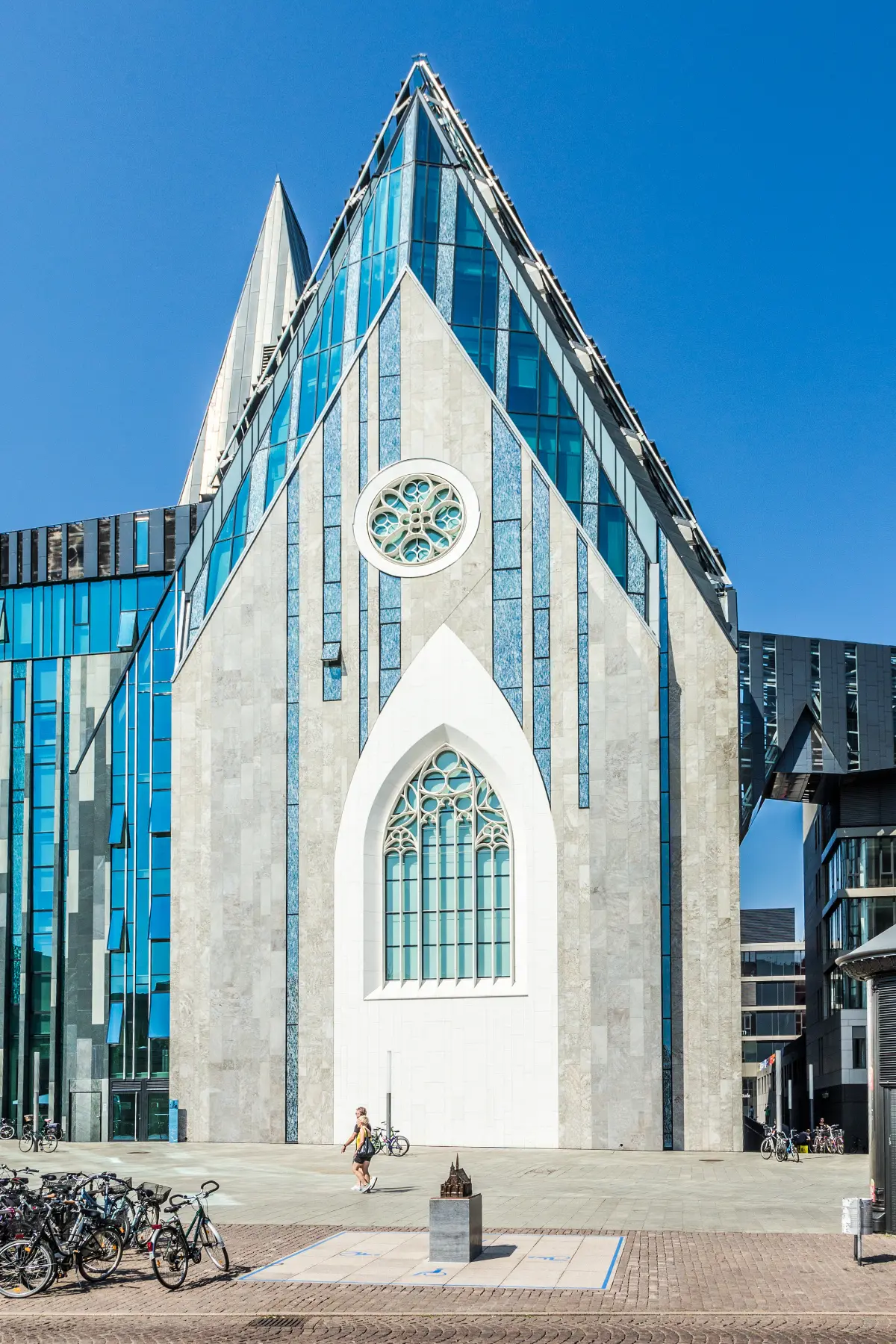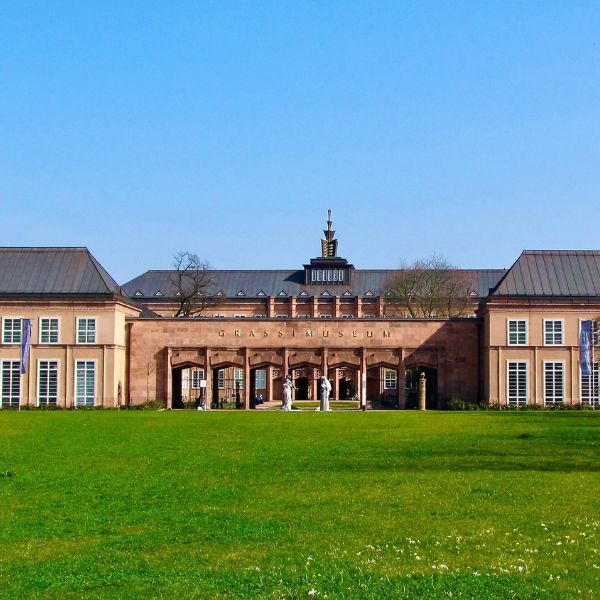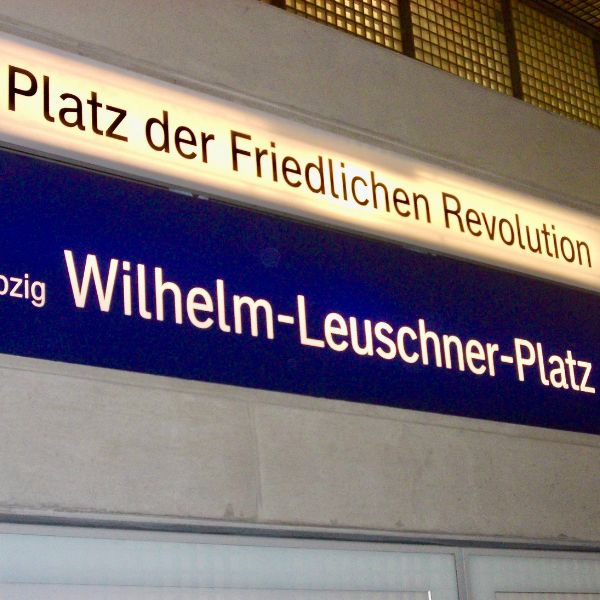- Home
- Top German Cities To Visit
- Things to do in Leipzig
12 of the best things to do in Leipzig: A historic city of music
By: Eran Fulson / Traveler & Blogger / After 15+ years of travel across North America and Europe, I now help travelers experience Germany beyond the guidebooks with firsthand tips and cultural insights.
A journey into Eastern Germany and the heart of Saxony will undoubtedly take you through Leipzig. It’s roughly 93 miles southwest of Berlin and situated in the low-lying and fertile Leipzig Basin. Even without so many things to do in Leipzig, the quality of life and cost of living makes it one of the most liveable cities in Germany.
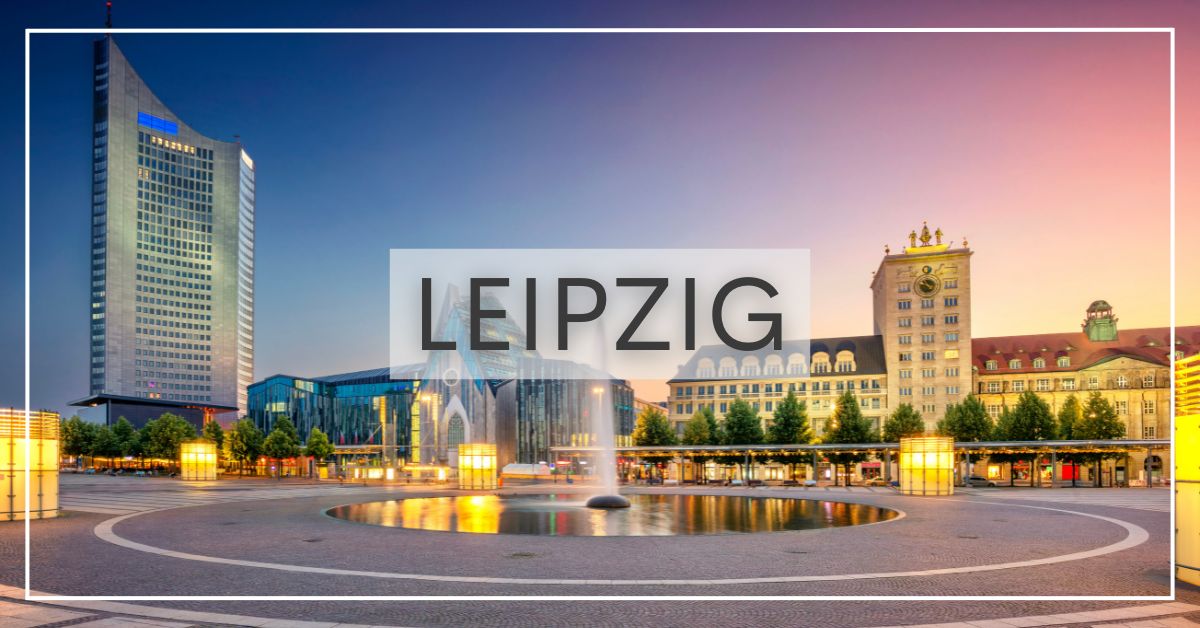 Leipzig skyline at dusk
Leipzig skyline at duskOn this page:
Curated Gallery:
Leipzig has a long history stretching all the way back to 1015 when it was known as Urbs Libzi. Thanks to its proximity to the main trade routes of Central Europe in the Middle Ages, it was later granted municipal status in 1170 as the city continued to expand.
Leipzig was no stranger to conflict, as several battles during the Thirty Years’ War were waged on its boundaries. Closer to home, the Battle of Leipzig (aka Battle of the Nations) in 1813 ended the last of French power in Germany and Poland.
Napoleon saw his 185,000 French troops fall to approximately 320,000 Austrian, Swedish, Russian, and Prussian forces. By the end of the battle it was one of the deadliest in the conflict with nearly 95,000 total losses.
Despite the years of conflict and eventual Communist rule, the people of Leipzig continued to establish themselves as a city of music and culture. That early and determined perseverance laid the foundations of a city that has had to endure and overcome.
Getting There
Top Tip
Check out the Leipzig Card before arrival. The card entitles an unlimited number of journeys on public transport within Leipzig and further discounts on tours, museums, and restaurants.
While not quite up there regarding ease of access compared to the like of Cologne or Frankfurt, Leipzig does have an airport which mainly serves Europe if that’s where you find yourself at the time.
Prepare for a bit of a transfer if coming in from further afield, as Berlin is the best place of entry. And it’s only a roughly two-hour drive/bus/train into Leipzig, which is safe to say, most of us have done longer.
While planning your Leipzig trip, it’s worth diving into the public transport options before heading over. If at least to save those moments of quickly doing a Google search laden with luggage and looking very much like a tourist - though I daresay it’ll be obvious anyway. Germans are a perceptive bunch.
What Leipzig Airport lacks in international arrivals, the Leipzig Hauptbahnhof (Leipzig Central Train Station) makes up for in sheer size. By square footage, the Leipzig Central Station is the largest in Europe, and all train lines for the Central German S-Bahn pass through its tunnel under the station.
But it’s not only for coming and going, over 140 shops and restaurants spread out over three levels are all looking to delay your departure a little longer.
 Shop till you drop, just don't miss your train.
Shop till you drop, just don't miss your train.Elder Status
The St. Nicholas Church is Leipzig’s oldest, with over 850 years gone and still ticking. I’ll try for a quick summary of a near-millennia worth of history in a few sentences. This Romanesque church stood for nearly four hundred years until an influx of wealth into Leipzig saw a Gothic revamp undertaken in the 16th century.
Two hundred years later, Johann Sebastian Bach became cantor of and performed some of his major compositions at the church - among his greatest hits, St. John Passion premiered in 1724 and the Christmas Oratorio in 1734.
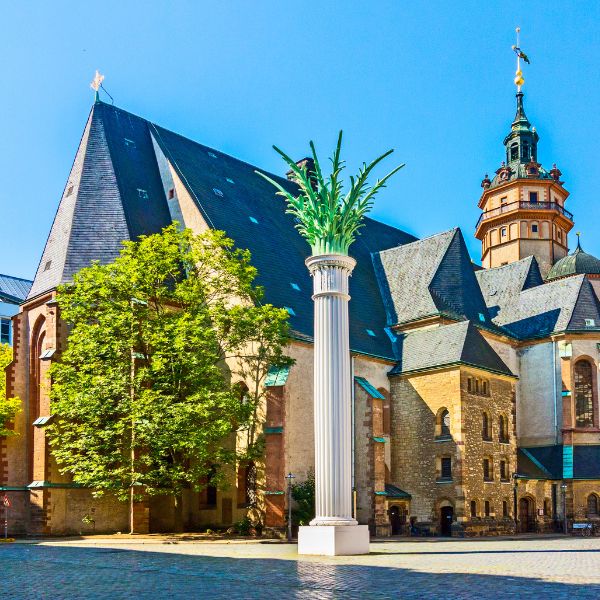
It wasn’t until 1989 that the St. Nicholas Church became national news where it was the starting point for the Peaceful Revolution. The church became a symbol for the reunification of Germany and was ground zero for the beginning of the end of Communist rule.
Trusting Thomas
In a debatably 1A vs 1B for religious notability in Leipzig, the St. Thomas Church holds a few accolades of its own. The church was originally built for the Canons’ Monastery in 1212 and later saw Martin Luther present the introduction of the Reformation in 1539.
It took two hundred years before its next celebrity filled the halls with historical renditions. Enter, Johann Bach, again. He played favorites about as well as he played the piano, while maintaining a degree of multitasking prowess.
His canton duties extended to St. Thomas as well as St. Nicholas, and so much so that his grave resides in the St. Thomas chancel. While the church didn’t reach the same heights of domestic political acclaim as its saintly compatriot, it does feature a 223-foot tall tower with a viewing platform offering some pretty spectacular views over Leipzig.
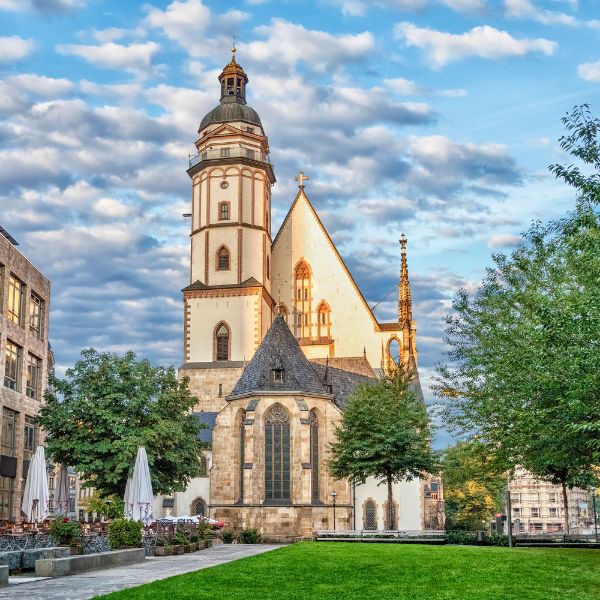
Center of Attention
If you find the Marktplatz (Market Place) you’ll find the Altes Rathaus (Old Town Hall) lingering around like a bull in a china shop. The hall fully embraces its Renaissance architecture in no small measures and is still used today for concerts and cultural events.
The first stone was laid in 1556 and features a 174-foot-long ballroom that has been used for royal festivals, weddings, and court proceedings. In further proof that stuff can do two things, The Old Town Hall is also, unsurprisingly, home to the Museum of City History. Inside you’ll find a 269 square foot true-scale model of the city of Leipzig as it was in the 19th century.

Out with the Old
And in with the new. Well, it’s new if you’re comparing the 118-year-old Neues Rathaus (New Town Hall) to the 800-year-old neighboring churches. The New Town Hall stands on the site where the 13th century Pleissenburg Castle used to be.
This is notable as the castle was where the Leipzig Debate took place in 1519 between Martin Luther and Johann Eck, a defender of Catholic doctrine. The result of this debate led to Martin Luther being threatened with excommunication from the Catholic Church by the Pope.
The New Town Hall was built in 1905 and went heavy on opulence in the historicist style, and at 376 feet, its tower is also the tallest Town Hall tower in Germany. And of course, what good is a tower if you can’t go up for a view. Just keep in mind it’s 250 steps from the fifth floor to the top. But on a good day, it’s well worth getting your step count up.
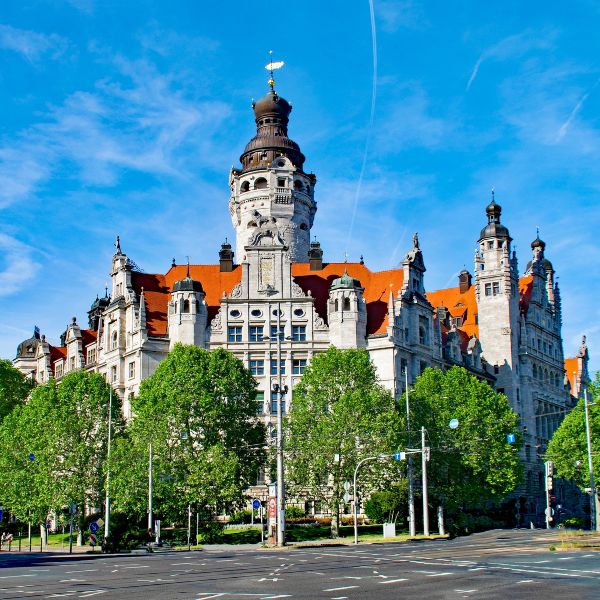 New building - old style.
New building - old style.Oper Sesame
One of the newest iterations of Leipzig’s cultural scene houses one of the oldest musical collaborations in Germany, next to Hamburg. The Oper Leipzig (Opera Leipzig) was founded in 1693 and is the third-oldest bourgeois music theater stage in Europe. The original building that Leipzig Opera called home was destroyed in an Allied air raid in 1943.
Proof that good things take time - the reconstruction lasted four years and was completed in 1960 with an inauguration performance of Wagner’s Die Meistersinger von Nürnberg. If you’re looking for things to do in Leipzig, this is as culturally pomp as you’re going to get.
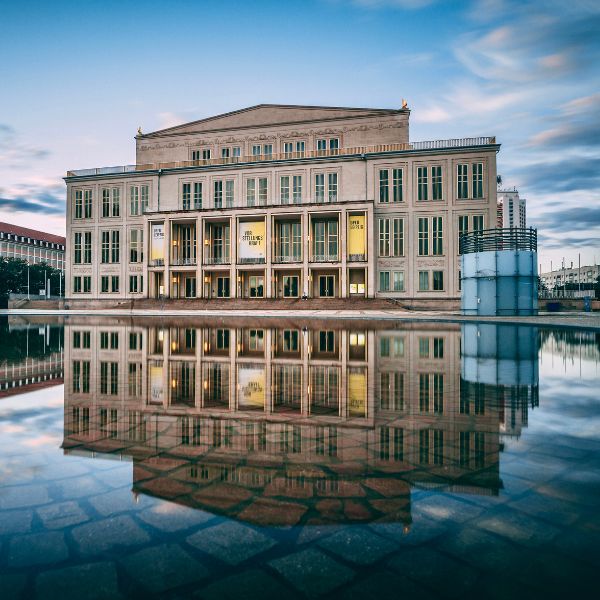
I’ll be Bach
Johann Sebastian Bach is a bit of a big deal in Leipzig historical circles. While he was born in Eisenach over ninety miles away in 1685, Bach’s career was beginning to rise as he made the move to Leipzig in 1717. Encompassing the life of Bach is the suitably named Bach Museum.
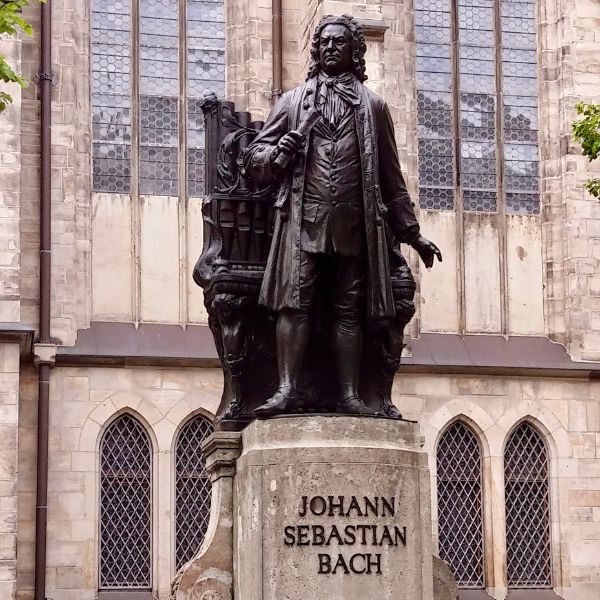
Situated in a house owned by Georg Bose, a family friend of the Bach’s, it features the life and work of Bach in a permanent exhibition. Bose himself was an affluent merchant and collector of paintings and other various fine art.
His own collection was supplemented by his son-in-law Johann Richter’s collection. This was followed by the Museum of Music History by Paul de Wit which was later added in 1893. The museum featured Paul de Wit's personal collection of rare musical instruments and manuscripts.
The Grassi is Always Greener
On the other side of Leipzig’s architectural style, the Grassi Museum features some of Germany’s peak Bauhaus and Art Deco designs. Grassi is one of the largest museum complexes in Germany and home to the Museum of Ethnography, the Museum of Applied Arts, and the Museum of Musical Instruments.
Ethno - The Museum of Ethnology is the among the largest in Germany, holding a collection of around 200,000 pieces. This collection is a global one with objects from all over Asia and Oceania, African, American, and Europe.
Applied Arts - 3,000 years of art and cultural history call the Museum of Applied Arts home. The collection features around 230,000 objects from Europe and international artists across arts and crafts, architecture, and photography.
Musical - The Museum of Musical Instruments is a branch of Leipzig University, and its collection is as much research-based as it is a display of 19th and 20th century instruments.
Contagious Creativity
Home to one of Germany’s largest art collections, the Museum der bildenden Künste (Museum of Fine Arts or MdbK for short) is also one of the country’s oldest. Across more than 75,000 square feet of exhibition space, it’s collection of 4,600 paintings spans the Middle Ages to the present.
Along with the paintings are 1,800 sculptures, 5,000 photographs, and over 70,000 works on paper. When you’re dealing in the thousands of anything, there’s a bit to keep one going for a while.
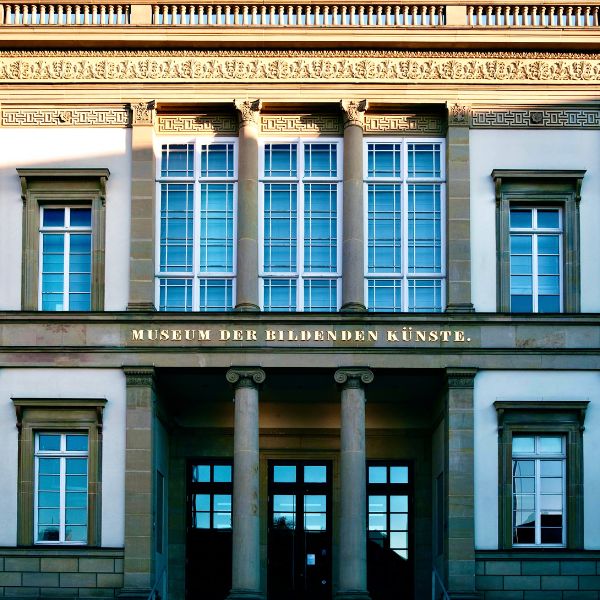
We Revolt in Peace
Prior to the 40th anniversary of Communist rule in the German Democratic Republic (East Germany) there were already protests underway in Poland, Hungary, and Czechoslovakia. But it was a seemingly innocuous gathering in Leipzig known as the Peaceful Revolution which led to the eventual fall of the Berlin Wall in 1989.
Despite a softening by a young Mikhail Gorbachev of the hard-line Communist stance, Soviet policies had already left an indelible mark on the lives of countless Germans living in the East. Though grassroots organizations were strictly prohibited, beginning in 1982, a Monday prayer service was held in the Nikolaikirche (St. Nicholas Church) to pray for both personal and political concerns.
The practice of a Monday prayer service spread to other churches, and while becoming more political, a peaceful revolution was born. These services at St. Nicholas soon evolved and filled the square outside the church. As the numbers of these assemblies grew, so did the police presence.
Chants of ‘No violence!’ rose up when altercations developed between protesters and police. By the beginning of October 1989, police brutality was reaching a breaking point with crowds of around 120,000 people filling the square. As a result, the Monday demonstrations had begun to spread to other cities inciting national reform.
On October 30th, the number of protesters grew to 300,000 despite the entire government resigning to appease the population. Two days later, and as a result of miscommunication, the Berlin Wall was finally broken and German reunification began.
Kangaroos and Pints
One of the first zoos in Europe actually began in a pub. In 1878, the animal-enamoured landlord Ernst Pinkert converted the Pfaffendorfer Hof into a zoological garden. 4,500 visitors put aside their plans for things to do in Leipzig that day and gathered for the grand opening which featured kangaroos, parrots, a Bengal tiger, and a pair of lions.
Over the next 140 years, the Leipzig Zoo has gone through many ups and downs via two world wars, political unrest, and economic instability to become ‘The Zoo of the Future’. These days, the zoo occupies 54 acres and maintains approximately 600 species with 5,000 inhabitants. The Leipzig Zoo has continually defended its highest rank among German zoos and is behind only Vienna in all of Europe.
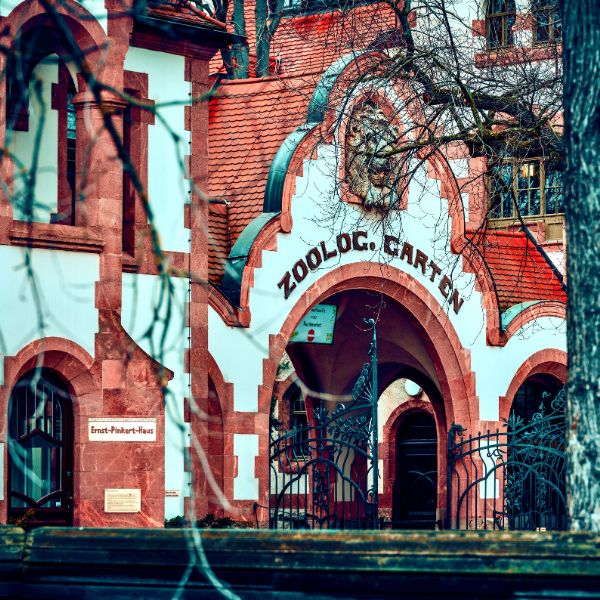
No School Like Old School
With more than six hundred years of teaching under its belt, Leipzig University could teach you a thing or two. Literally and metaphysically. Founded in 1409 by Frederick I and his brother William II, the university is one of the oldest in the world and second-oldest in Germany (first being Heidelberg).
Among the famous alumni over the years: Johann Goethe, Friedrich Nietzsche, Richard Wagner, Angela Merkel, plus nine Nobel laureates. Heady company indeed.
Though it was granted a papal bull on its inception, Leipzig University separated itself from the Catholic Church when it accepted the Reformation in 1539. Standing on its own, it evolved into one of the preeminent literary and cultural centers in Europe. A notability it still carries today, with internationally acclaimed expertise in medical studies and research.
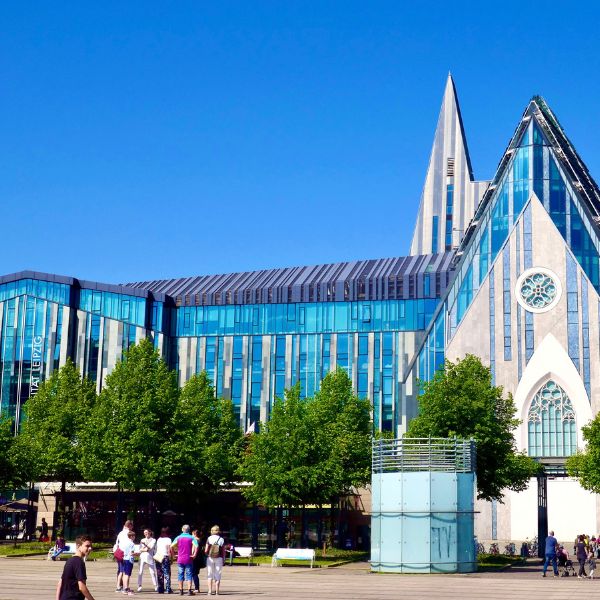
Reaching New Heights
Lunch with a view? You’ll find quite the view up the 467-foot tall Panorama Tower, with its restaurant on the 29th floor. It’s the highest restaurant in Germany along with a viewing platform even higher up at nearly 400 feet, offering the best way to see the city.
While still the tallest building in Leipzig, it was the tallest in Germany for several years in the late 60s. The building itself was intended to look like an open book, but has since taken on the nickname ‘Wisdom Tooth’. Personally, I only see a book-like shape instead of a tooth. Unless it’s like a wisdom tooth in that it’d be a pain to remove? I don’t know, each to their own.
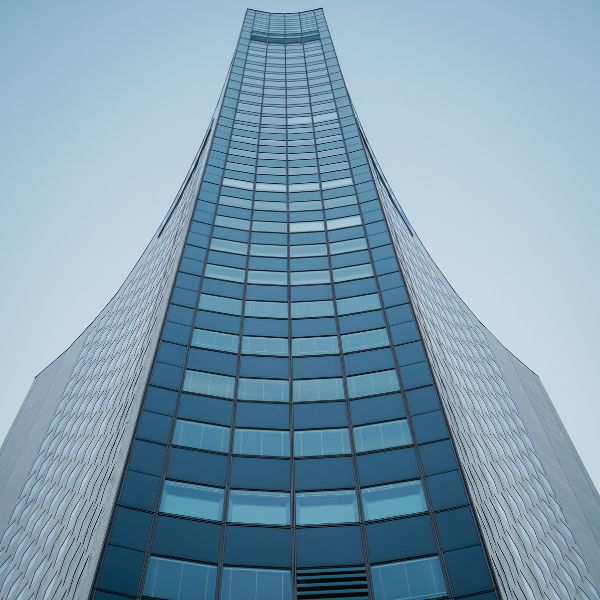
Granddaddy Christmas
The arrangement of a Christmas Market in Leipzig beginning in 1458 predates all others, except for Dresden 1434. Given the age, it’s only fitting to be situated in the medieval city center. Growing in size every year as more vendors are added, so too do the crowds, with nearly two million visitors taking in one of the most popular Christmas markets in Germany.
The Market is laid out across various areas in the historic old town center, with around 300 stalls of unique cultural and culinary offerings. Keeping the wintry chill away is the traditional Glühwein (mulled wine) offered all throughout the market. And what better way to enjoy a bit of liquid warmth than having it in a Leipzig Christmas Market Mug – also available to keep as a souvenir (after deposit).
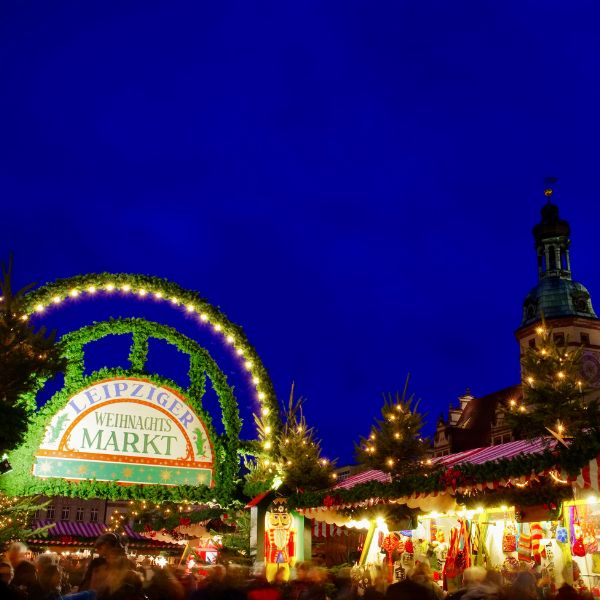
Some market highlights in and around Leipzig include: The main market is held in the Marktplatz (Market Place) by the Old Town Hall, with a 60+ foot tall Christmas tree taking up its usual spot among the stalls.
A short walk over to the Augustus Square offers a little break from the hustle of the crowds focussing on food and a birds eye view of the city center up on the Ferris wheel. At the center of the Augustus Square is the Fairy Tale Forest, life-sized recreations of the Brother's Grimm fairy tales.
And that’s only about half of the attractions – the best way to experience it is to obviously immerse yourself in one of the best markets Germany has to offer.
Conclusion
Personally, after writing more than 2,500 words, it doesn’t really feel like I’ve scratched the surface. There are so many things to do in Leipzig with its rich cultural offerings of artwork and music, notable landmarks, and events all through the year.
Leipzig is very much a city on the rise after forty years of Communist rule – one would argue it’s like a smaller version of a young Berlin. The city is eager not just to leave behind a scar on its history, but to rewrite itself into one that is known for what is now.
There is no denying it is all-welcoming, vibrant, and a cultural blend of old and new. One that is well worth the ticket.
When was Leipzig established?
When was Leipzig established?
1015 A.D.
What is the land area of Leipzig?
What is the land area of Leipzig?
114.9 square miles
What is the population of Leipzig?
What is the population of Leipzig?
604,000 (2023)
What is the GPS location of Leipzig?
What is the GPS location of Leipzig?
What are the closest major cities to Leipzig?
What are the closest major cities to Leipzig?
20 miles to Halle
62 miles to Dresden
93 miles to Berlin
142 miles to Nuremberg

